I’ve spoken before of my love for The Legend of Zelda: Breath of the Wild. When I first got my Nintendo Switch I genuinely couldn’t believe how fresh and new the game felt, and I spent no small amount of hours exploring every nook and cranny the game had.
I’ve recently started replaying Breath of the Wild, and one thing that actually amazed me was how new the game felt, even a second time, and while I’ve been loving my second trip through Hyrule, the issues I had with it from the start definitely haven’t gone away.
This got me thinking about The Legend of Zelda: Tears of the Kingdom, and how if so much of it is built off of its predecessor’s framework, would these issues still persist? Perhaps the developers have learned from the games that inspired them while making this, or even listened to the feedback of critics? Nintendo showed a little bit more in its February Direct, which gave me a bit of confidence, but here are the 10 things I hope The Legend of Zelda: Tears of the Kingdom either implements or improves.
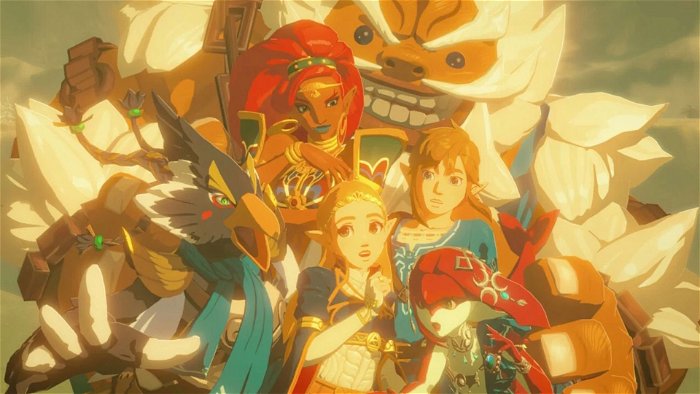
Better Storytelling
The Legend of Zelda: Breath of the Wild has one of the series’ best stories—the forming of a band of champions to defend against a timeless threat, punctuated by Princess Zelda’s own personal turmoil of not living up to the legacy of her name. Now, 100 years after a great Calamity, the chosen hero awakens to a world in the aftermath teaming up with the progeny of his former friends in order to stop The King of Evil once and for all.
However, The Legend of Zelda: Breath of the Wild also has one of the most poorly told stories ever. Part of the problem is definitely that much of the necessary backstory is delivered in flashbacks the player has to physically find—yes I get that it incentivizes the player to explore the world, but it also means you can easily miss crucial plot details if you just can’t find stuff. But my bigger problem is with how the main story is delivered.
Every single one of the four Champion encounters you have throughout the game, plays out exactly the same—you get to the main town, have a flashback about the old champion, find the new one, and complete whatever task THEY need to complete to be the champion, fight the Divine Beast, move on. This is even more apparent in the DLC that shows how Zelda met every one of the former Champions, and each one literally plays out with her approaching a place, getting beset upon by monsters, and the Champion kills them all and moves on.
This problem with storytelling is inherent to the way Breath of the Wild prioritizes the concept of freedom above everything else. No one story can play ahead of another, lest the player experiences things out of order and become confused. As such, each narratively significant encounter plays exactly the same and the story becomes a homogeneous mess.
My hope for the sequel would be to find a way to have more straightforward storytelling while maintaining the freedom of exploration. It’s not like other big, open-world sandbox games haven’t accomplished this while allowing players to explore a big open world; hell The Legend of Zelda has accomplished this in the past. With the developers claiming that The Legend of Zelda: Tears of the Kingdom’s story is supposed to be even darker than Majora’s Mask, the only way they’re going to get close to that is to tell a story with distinct moments, with proper narrative cohesion.

RPG Elements
While The Legend of Zelda has always been an adventure game, Breath of the Wild was very clearly taking some inspiration from RPGs. However, having weapons and armour with numbers attached to them does not an RPG make. Something I noticed during my second playthrough of BotW was how much better the game would have been if it took its RPG mechanics just a step further, and allowed players to find a play-style that suited them best.
This may come off a bit gamer-fantasy, but I think—and secretly hope—the implementation of a basic perk system could help the gameplay in The Legend of Zelda: Tears of the Kingdom quite a bit. While I’m sure the game will probably stick with the Shrine Temples for health and stamina upgrades—my guess is whatever causes Link to lose both his arm and Master Sword will also sap him of his strength, facilitating the second trip through the Shrines—the game could still have the same four Spirit Orbs for health or stamina, but maybe have every eight or 12 orbs grant you a small perk.
This could range from better climbing ability or better grip for climbing in rain; stealth upgrades or increased rune ability power, since it seems like magic, is tied to his arm as one trailer shows him without the Sheika Slate. Or better yet, even being able to use Spirit Orbs for Attack and Defence upgrades, to mitigate the game’s necessity for constant Armour switching (but we’ll get into that momentarily). It could even potentially grant combat abilities like Wind Waker’s reaction attacks or attack buffs for certain weapons.
As I said, I know this comes off like fanboy daydreaming, and realistically The Legend of Zelda: Tears of the Kingdom will likely be similar to its predecessor, but replaying the game and attempting any kind of stealth approach to a Bokoblin camp just really made me wish I could build my Link to be more stealth-capable and I think a lot of players would’ve liked the ability to customize their Link to their playstyle—reaffirming the supposed freedom players were supposed to have.
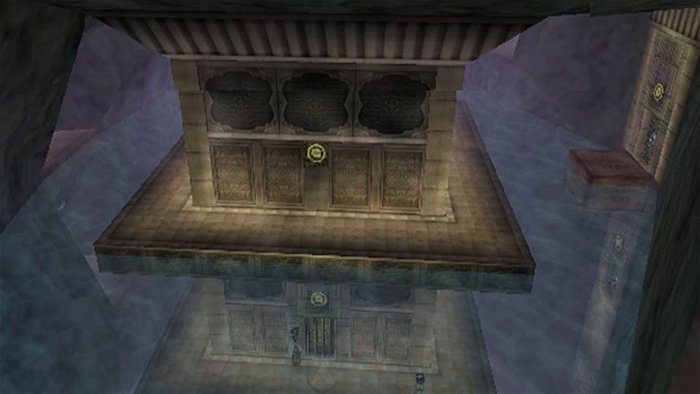
Traditional Dungeons
When CGM’s Cody Orme was first reviewing The Legend of Zelda: Breath of the Wild, he showed me a small bit of the game while I was stopping by the office. He initially took me to one of the Divine Beasts and described it as “a Shadow of the Colossus boss fight that turns into a dungeon.” With that in mind, when I finally got to my first encounter with the mechanical monstrosities, I was a bit disappointed—in some ways he was right, but in others he definitely embellished.
My biggest issue with the Divine Beasts is how they don’t really feel like dungeons in the traditional sense of The Legend of Zelda. They’re all big, open spaces that all function exactly the same—requiring you to manipulate the map in some way for what can generously be described as “puzzle solving.” They’re really more like an extra-large Shrine challenge than the true dungeon I was hoping for from something that is so structurally and narratively important.
Don’t get me wrong, for the most part, I love how Breath of the Wild reinterpreted dungeons—relegating them to miniature puzzle rooms that award you with the necessary tokens you need to get health or stamina. But the removal of such an iconic Zelda staple feels like it’s doing the game a massive disservice when each of the Divine Beasts could have been designed in interesting ways—incorporating elements and themes from previous Zelda dungeons to properly fit the four animals and areas each represents.
This is also where the above-mentioned story problem bleeds into the gameplay, as no Divine Beast can feel distinctly different from another, lest the player experiences them out of order and get confused. But The Legend of Zelda: A Link Between Worlds has already proven you can have a more freeform approach to dungeons, however, that would require…
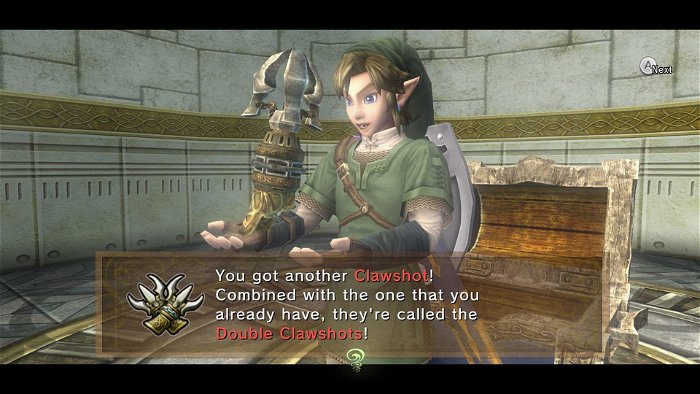
Traditional Zelda Items
One of the things I genuinely didn’t know I’d miss until it was gone was the “Zelda staple items.” I think the fact that I even put that in quotes highlights the way gamers unoriginally remark on the fact that every Zelda has the classic Boomerang, Hookshot, Bow, etc. Perhaps familiarity breeds contempt, but every Zelda featuring not only the key items we know and love, but seeing what new ones the developers may have come up with for each new adventure was always an exciting prospect playing each new game.
And a part of me is willing to admit that for the way Breath of the Wild reinvents its gameplay, the necessity of such items is pretty irrelevant—considering they give you the Runes which are essential for exploration at the start of the game. Even the way bows are relegated to main weapons, and you can even find boomerangs on certain enemies, does acknowledge their existence in some way. But part of Zelda’s identity is intrinsically linked to its iconic items, and I think there could be space to have them.
Again, if The Legend of Zelda: Tears of the Kingdom drew from A Link Between Worlds, key items required for specific dungeons could be rented or bought from a shop—and classic Zelda games have also proven that those same items can be an essential part of exploring the world. Imagine being able to hookshot to the side of a mountain, saving precious stamina and giving you a bit more leeway to climb. Or perhaps getting something like the Sand Wand to allow you to create platforms in the Gerudo Desert, giving you an edge over the enemies dwelling there.
All of that would not only flesh out the gameplay a lot better but also add more of an identity to The Legend of Zelda: Tears of the Kingdom than “BotW’s sequel,” or “the big sandbox Zelda.” However, for any of that to work, you would probably need an overhaul of the entire weapons system, which brings us to…
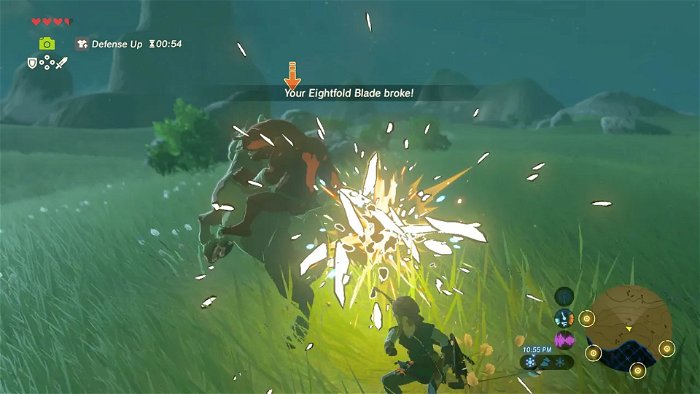
An Entire Overhaul of Breath of the Wild’s Weapon System
I think it’s safe to say the weapon system is one of the worst things about Breath of the Wild, and maybe of all video games period. I can’t imagine even the most staunch defenders of BotW thinking weapons shattering like glass after three or four hits is in any way fun or challenging. I hated this the first time I played the game, and I hate it now, after playing the game a second time—and even more so after playing a game like Elden Ring.
What never made sense to me was how BotW’s weapon system directly contradicts its design philosophy of unlimited freedom, since players are not allowed the freedom to use the weapon they want since they’re forced by the game to keep switching—especially as enemies become particularly damage spongy in the later game. The whole mechanic is as pointless as it is mindboggling since no other video game, even ones with item degradation, treat weapons like this.
If there is one single thing I hope Tears of the Kingdom changes, it’s this. There are so many examples of ways this can be done better. You can go the Elder Scrolls route and have players pick up surplus weapons and sell them at stores. You can go the SoulsBorne route and have weapons degrade with use, lowering their attack value, and needing to be repaired. Not to mention, you could implement new systems that would bolster the combat, such as upgrading weaponry, attaching different abilities or modifiers to specific weapons, or even…
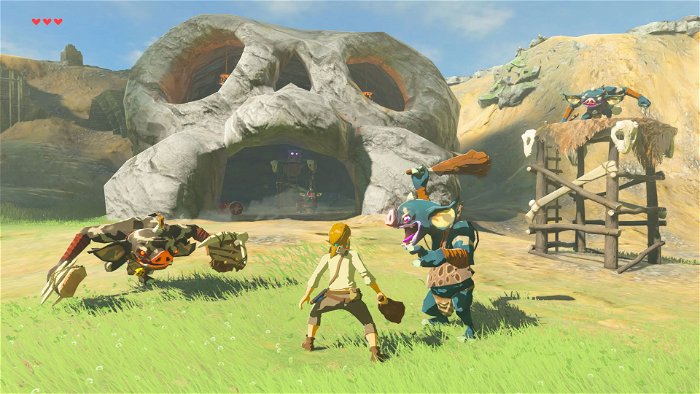
Crafting?
I title crafting with a question mark because so many open-world “survival” games feature crafting as if it’s an obligatory thing just because Minecraft does, in fact, exist. However, I honestly think some rudimentary crafting would fit well into The Legend of Zelda: Tears of the Kingdom, in the same way, it would have in Breath of the Wild.
I remember in the initial gameplay demo for BotW, Nintendo made a point to show how players could chop down a tree and use the log to cross a small canyon. This kind of ingenuity was perfect for its freeform exploration, however, there’s rarely a moment in BotW where this comes into practice, at least in my experience.
“One of the other things that bothered me more the second time around playing Breath of the Wild was how draconian the entire item system was.”
I think about a game like Death Stranding, and how planning and exploration are key components of its gameplay, and as such, the game gives you several tools to more conveniently explore its world. Ladders to scale cliffs, or set across deep gaps like bridges; ropes to help repel down mountainsides, or better ascend steep cliffs—these are all things The Legend of Zelda: Tears of the Kingdom could give to the player to not only help them explore but also incentivize more gathering of materials outside of food and potion crafting.
Not only that, but a rudimentary crafting system could help alleviate some of the issues with the awful weapons system. Nintendo showed something during the February Direct that might hint at some kind of craftable vehicle, meaning some kind of system might be in place, but allowing players to craft weapons on the fly, or repair damaged ones would mitigate some of the annoyance, and allow players to consistently use the weapons they want to, instead of grabbing stupid Boko Clubs every fight. And speaking of stupid Boko Clubs…

A Minor Overhaul of the Entire Item System
One of the other things that bothered me more the second time around playing Breath of the Wild was how draconian the entire item system was. Everything that is crucial to your adventure is stuck behind menus that you have to constantly scroll through in order to approach any situation. Nowhere is this more annoying is Food—which is your primary source for replenishing health—which you have to scroll through EVERY PAGE of Materials before you can get to it.
This is made worse by the fact that certain useful abilities are tied to certain armour, so if you’re travelling and you need to cross a small body of water, climb a cliff and engage in combat, you’re going to need to stop your game and completely switch your armour three times. Not to mention if you get into a fight with any Black or White enemies who just absorb damage and hit like trucks, you’ll need to keep pausing mid-fight to select a food to eat or swap in your 19th weapon. It’s so completely unintuitive.
Like I mentioned above, this could be mitigated by RPG elements, or just an overhaul of the item system that allowed players to choose one weapon or set of armour that they like, and play with it. If we look at a game like Elden Ring—or the whole SoulsBorne series—players don’t always go for the armour that has the supposed best stats, because those games give players the freedom to mix and match, and then customize in a way that fits their play-style.
If The Legend of Zelda: Tears of the Kingdom should learn anything from those games, it’s to allow players to have a basic quick select, since no one wants to keep pausing in the middle of a fight to switch weapons and down Beef Bowls. Let players map a main and sub-weapon to the D-Pad, or have a dedicated heal button that just pulls from basic food or potions—saving the stuff with effects for a specific selection.
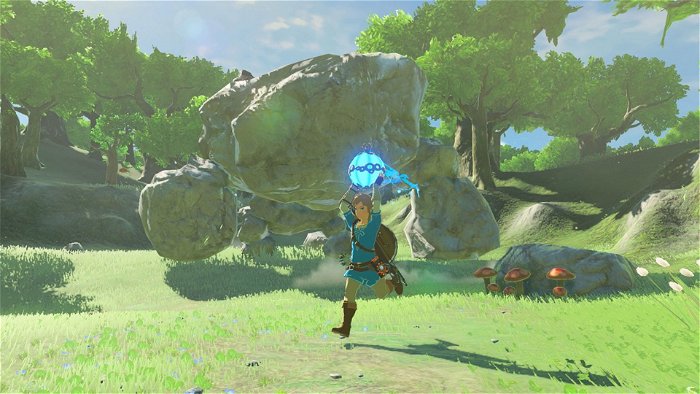
More Enemy Variety
Going through the game a second time, it became very apparent that Breath of the Wild was seriously lacking in notable enemies to fight. Beyond your basic Bokoblins, Moblins that don’t even look Moblins, Lizalfos, Chu Chus, and Keese, the only real standouts are the Wizzrobes and Lyonels—Lynels in particular, only being present in a handful of games. The Guardians are okay, intimidating as they first are until you figure out the timing of reflecting their beams and then they become little kitty-cats, but they’re not all that interesting design-wise.
Breath of the Wild’s Hyrule is a big and sprawling place—and Tears of the Kingdom looks set to double that with its Sky World—but it’s populated by the same handful of enemies making it somewhat boring to get into fights. It would be much more interesting in TotK to delve into a forest with Skulltellas lurking in the grass, or Like-Likes shifting their weird jelly bodies along the beach. Seeing Poes haunting a forgotten graveyard, or finding a Darknut in old castle ruins waiting for a worthy opponent. The Legend of Zelda has a robust bestiary and I really hope The Legend of Zelda: Tears of the Kingdom will pull from it.
“Ganon isn’t an actual character in BotW, he’s a concept. He’s the vague idea of something evil that never manifests into anything real”
Furthermore, this extends to boss monsters too. While it’s always pretty fun to find a giant Hinox sleeping in some grove, climbing onto a slumbering Stone Talus, or even getting assaulted by a Molduga in the desert for a high-stakes sand-surfing battle; there’s really not a ton of variety in what is, arguably, one of the Zelda franchise’s most defining features.
Returning to the point of bringing back traditional dungeons, The Legend of Zelda has always been known for capping off its dungeons with memorable and challenging bosses. While the February Direct showcased a new flying-type enemy and some redesigned Bokoblins and Lizalfos in TotK, alongside some added and reimagined boss monsters; I really hope Tears of the Kingdom can do better than three boss monsters lurking out in the wild and give us something on par with Queen Gohma, Goht, or Jalhalla. But no enemy needs fixing more than the Big Boss himself…
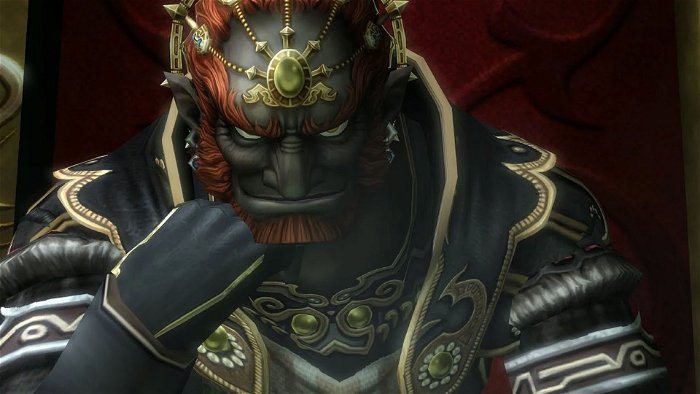
Ganon Needs to be a CHARACTER
One of the worst things Skyward Sword did—aside from everything—was retconning much of the established Zelda lore into homogenous, boring nothing. But no one was done dirtier by that game’s story than the King of Evil, Ganon. Once the mighty King of the Moblins, who took the form of a man; Ganondorf Dragmire was reduced from an actual character to a vague concept with the most awful, generic bag guy name you can think of: Demise.
This awful idea carried through to Breath of the Wild, although they do refer to him as Ganon, it’s always preceded by Calamity. Sometimes he’s Calamity Ganon, and sometimes it’s just The Calamity, but the point remains—Ganon isn’t an actual character in BotW, he’s a concept. He’s the vague idea of something evil that never manifests into anything real, and when his iterations do show up within the Divine Beasts and even the final confrontation, they’re so far removed from the iconic villain we know and recognize that I question why they even bothered calling it Ganon in the first place.
It bothered me in Skyward Sword, and it still bothers me in Breath of the Wild. Why do Link and Zelda maintain their status as actual characters, but the series’ main villain doesn’t? With both the first trailer for Tears of the Kingdom and the one from the February Direct seemingly featuring the mummified corpse of Ganondorf, I REALLY hope his inclusion in this game manifests as an actual character. One with presence and motivation.
And I REALLY hope they avoid attaching obtuse concepts to him in TotK, like The Calamity or The Demise, and just make him the King of the Moblins, like he’s supposed to be. The February Direct definitely got me hopeful—giving him some voiced dialogue and suggesting he’ll have an actual presence in the game—but I won’t know for sure until we get the final product.
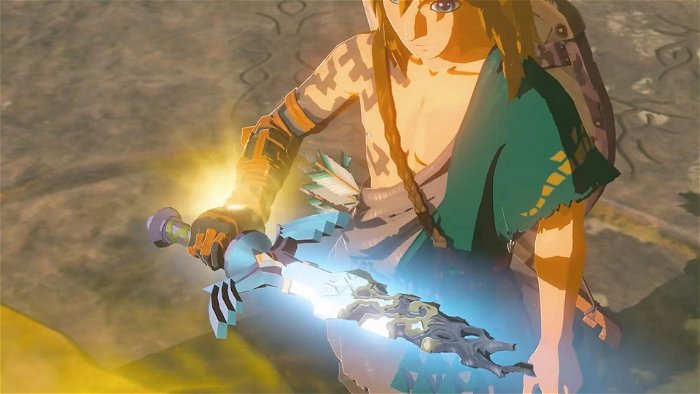
Don’t Restrict the Master Sword in Tears of the Kingdom
Speaking of iconic things that need to just exist in Tears of the Kingdom, I sincerely hope this game doesn’t restrict the use of the Master Sword once you get it. One of TotK’s trailers seems to suggest the Master Sword gets properly destroyed in this game, and I imagine part of the main quest will have to be restoring it—probably with the titular Tears of the Kingdom, which will likely be a reference to the Spirit Tears from Twilight Princess.
This ties into my hopes for an overhauled weapon system, but the one thing that I always felt was unforgivable in Breath of the Wild was attaching the game’s awful weapon degradation system to the game’s most iconic weapon. One of the coolest swords in gaming history, the Sword of Evil’s Bane—not this stupid “Sword that Seals the Darkness” bullcrap—running out of energy and requiring you to wait 10 real-life minutes until you can use it again.
This was the one weapon that should’ve not been subjugated to such a pointless system. Why would anyone not want to use Link’s most recognizable weapon? Why would the game disincentivize you from using its most iconic weapon? Were they afraid players would enjoy it too much? That having a weapon that didn’t shatter like glass after three hits would be far too convenient and make the game too fun?
I honestly cannot think of a single good reason why you wouldn’t allow players to use the Master Sword, in a Zelda game, other than that they came up with this awful weapon system and it needed to apply to everything. The Legend of Zelda: Tears of the Kingdom better not pull this crap, or I will be very disappointed.
These are just my hopes, and from everything that’s been shown The Legend of Zelda: Tears of the Kingdom looks to be a fascinating and fun evolution of its predecessor. We’ll have to wait and see how many of my hopes come true in the final product.




